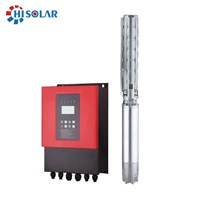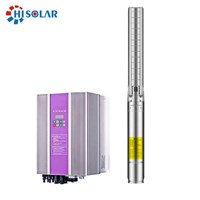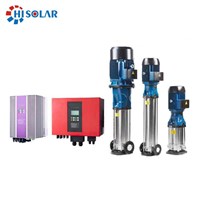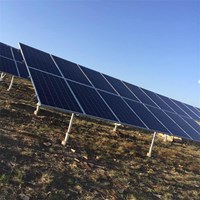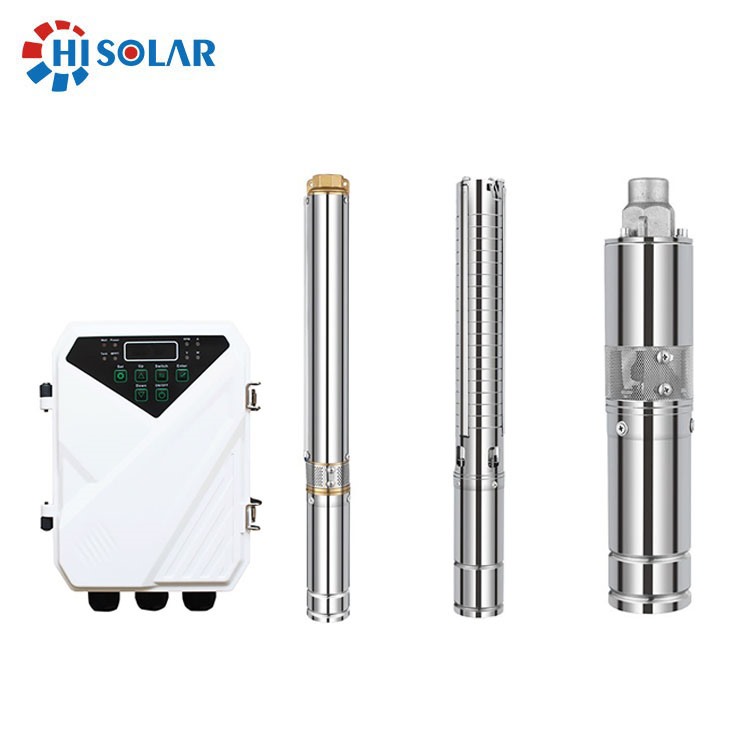
Power Range: 0.75-110KW for AC Solar Pumping System
Advanced Function: Remote monitoring
Application: Daily use (ground water), Agricultural Irrigation, Forestry Irrigation, Desert Control, Pasture Animal Husbandry, Water Supply for Islands, Wastewater Treatment Engineering and etc.
Our solar pumping system, using the infinite energy from the sun, provides a renewable energy solution based on cost-effectiveness advantages.
It can be quickly constructed, without power infrastructure and energy storage battery device.
The system operates automatically and intelligently, reducing the cost of manual management and maintenance.
Our solar pumping inverter controls and regulates the operation of solar pumping system. It drives the pump by converting DC power produced by solar array into AC power and adjusts the output frequency according to solar radiation in real time to implement maximum power point tracking (MPPT).
The pump, driven by 3-phase AC motor, can draw water from deep wells or river, lake to fill into the storage tank or reservoir, or directly connect to irrigation system, fountain system, etc.
According to the actual system demand and installation condition, different types of pumps such as centrifugal pump, axial flow pump, mixed flow pump and deep well pump can be applied.
System Optimization:
1. Single System Optimization
A single solar irrigation system consists of only one pump, a power -matched solar array and an inverter . The aim of optimization is to reduce the amount of PV modules as much as possible on the premise of filling the requirement of head and capacity. The rotational speed of pump is regulated according to the irradiation on the solar array; when the sunlight reaches its peak, the pump runs at the rated speed, and the output approaches the peak power of the solar array; when the sunlight is less abundant, the speed of pump varies bellow the range of the rated speed; when the speed as low as the capacity becomes zero, the solar pumping system stops working. So, there are big differences between solar irriation systems and traditional pumping systems in system design, and the system should be optimized according to the requirements of head, capacity, and local conditions of sunlight.
· 1) Determine the optimal average daily operating time and the range of speed governing.
· 2) Choose the optimal head and capacity of the pump.
· 3) Determine the maximum power of PV modules, the best working voltage and method of connection.

Daily Operation Curve on a Sunny Day
2. Multi-pumps System Optimization
There are several pumps in a multi-pump system. The pumps can be driven either by only one high-power inverter, or by several matching inverters. In the case of large capacity demand, the operation of the multi-pump system is more flexible. By switching solar arrays and pumps, all of the pumps run in MPPT mode when the sunlight is abundant, while some pumps will be shut down and all solar arrays supply power intensively for the rest running pumps when irradiation is weak. Based on the optimization of single pump system, the range of speed can be further optimized, and the photovoltaic(PV) pumping system always works with high efficiency.

